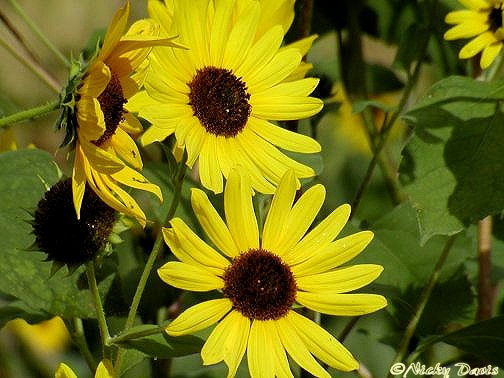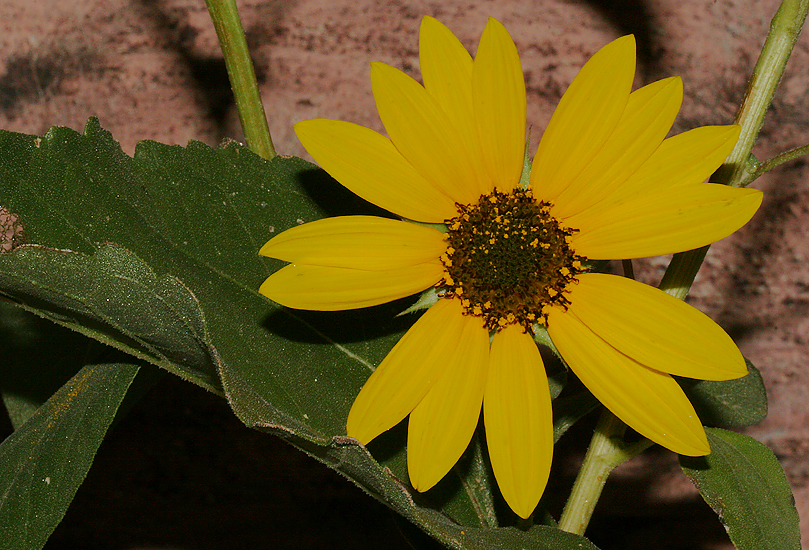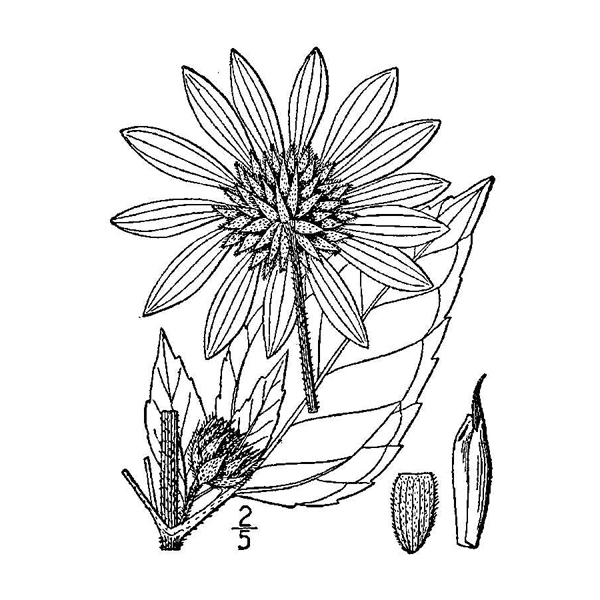


USDA-NRCS
PLANTS Database / Britton, N.L., and A. Brown. 1913
. An
illustrated flora of the northern United States, Canada and the British
Possessions.
3 vols.
Charles Scribner's Sons, New York. Vol. 3: 478.
Photo Details
1. August 29,
2004 - Antelope
Island,
Davis
County, Utah - ©Nicky Davis
2.
September of 2008, Washington Fields, Washington County, Utah
Other
An
important
crop as the oil has many uses. Birds are fond of the kernels. For
photos of butterfly larvae that use Sunflower as a host plant, click on
Bordered
Patch Butterfly
Also used by the Gorgone
Checkerspot as a larval host.
Folk
Medicine: Medicinally, seeds are diuretic, expectorant, and used
for
colds, coughs, throat, and lung ailments. According to Hartwell
(1967–1971),
the flowers and seeds are used in folk remedies for cancer in
Venezuela,
often incorporated in white wine. Reported to be anodyne, antiseptic,
aphrodisiac,
bactericidal, deobstruent, diuretic, emollient, insecticidal,
malaria
preventative, sunflower is a folk remedy for aftosa, blindness,
bronchiectasis,
bronchitis, carbuncles, catarrh, cold, colic, cough, diarrhea,
dysentery,
dysuria, epistaxis, eyes, fever, flu, fractures, inflammations,
laryngitis,
lungs, malaria, menorrhagia, pleuritis, rheumatism, scorpion stings,
snakebite,
splenitis, urogenital ailments, whitlow, and wounds (Duke and Wain,
1981)
( Purdue University)
Back to Top
|
|


